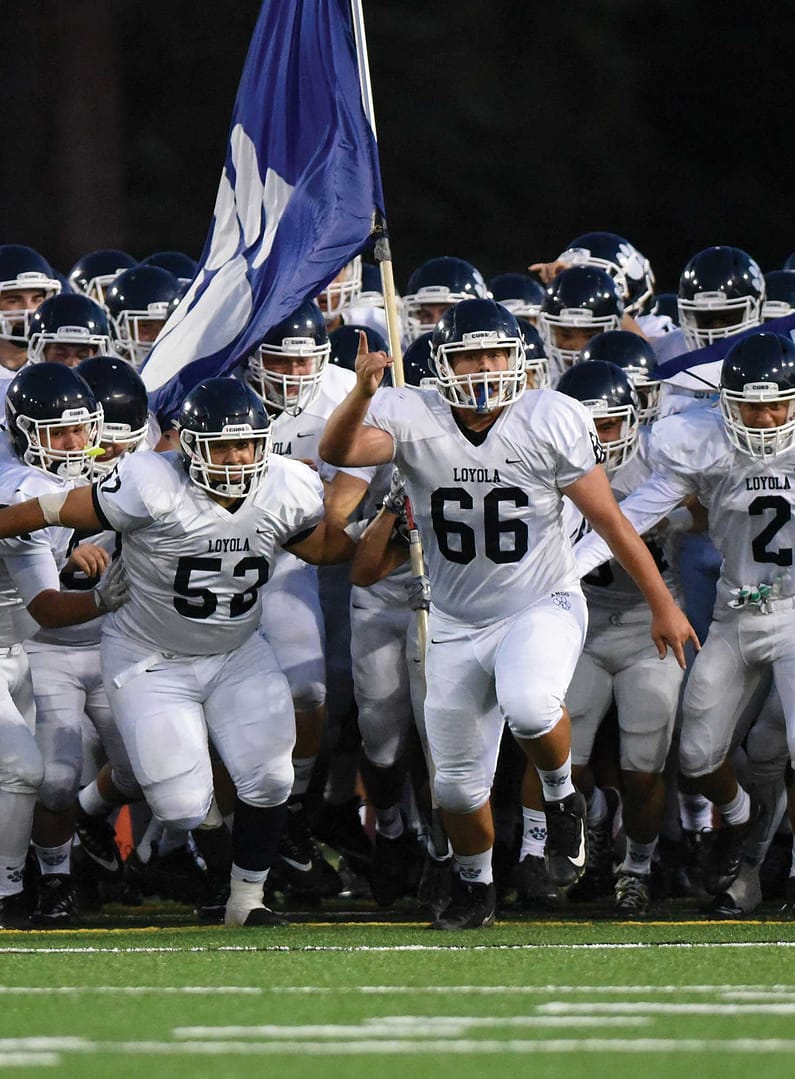As the entire sports world, from professional to youth sports, struggles with new adjustments and regulations imposed as a result of the COVID-19 pandemic, many high school athletes and coaches are left wondering how exactly they can plan for their futures and for collegiate recruiting.
On Sep. 16, the NCAA extended the suspension of all in-person recruiting for Division 1 sports through Jan. 1, 2021. Coaches are not allowed to meet face-to-face with a recruit off campus or do any in-person scouting. As of Sep. 1, however, Division II’s quiet period ended, and Division II coaches may now proceed with their regular recruiting calendar and attend in-person events.
The NCAA has still advised that all colleges suspend both official and unofficial visits to campus. Recruiting will not stop entirely though; coaches and recruits can still communicate digitally over email, phone, text and social media. While the quiet period has ended for Division II programs, prospective recruits can expect fewer in-person camps compared to previous years due to most sports in general being cancelled or remaining in a perpetual holding pattern with many campuses or sporting venues closed. This uncertainty has left coaches endeavoring to find new ways to evaluate prospective recruits.
The current NCAA mandatory recruiting dead period was originally initiated immediately following the cancellation of the winter and spring sport championships due to the Coronavirus pandemic, and was intended to last until at least Apr. 15. However, as the virus has evolved, the dead period has now been extended five times, most recently to Jan. 1, 2021.
According to the NCAA’s official definition, “A dead period is a period of time where a college coach may not have face-to-face contact with college-bound student-athletes or their parents, and may not watch student-athletes compete or visit their high schools. Coaches may write and telephone student-athletes or their parents during a dead period.”
Junior Sam Yoon, a varsity football offensive lineman, said, “The recruiting process has been slower than usual due to COVID restrictions and many prospect camps scheduled for summer were cancelled.”
However, recently, Yoon was able to attend a football prospect camp in Las Vegas, which did give him hope that the landscape may soon be changing for the better. Yoon mentioned that while he’s had initial conversations with Maryland, Berkeley, Harvard and Colombia, he is yet to have an official college visit and feels as though the interactions have been extremely limited, all as a result of the COVID-19-imposed restrictions.
On the contrary, Jack Brearton, senior varsity freestyle swimmer, feels that while recruiting restrictions had a negative impact on many, for him, they have proven beneficial. Brearton had started early in the recruiting process by talking to coaches in the fall of his junior year, so he had many things in the works prior to the COVID-19 shut down.
Brearton is committed to swim at Georgetown, but had offers from NYU and Emory, as well. Maintaining his training during shutdowns was tough, but with careful planning, he was able to utilize a friend’s pool and ultimately went to Florida for two months in June to train and maintain his workouts. With on-campus meetings prohibited, Brearton and prospective coaches had to get creative during the COVID recruiting process. Weekly Zoom calls, phone calls, and FaceTime with the teams and coaches left him feeling as though he was really a part of the team and ultimately, helped him secure an offer and solidify his decision to attend Georgetown.
As the mandates imposed as a result of the Coronavirus pandemic have created an ever-changing landscape in collegiate recruiting and high school sports, athletes and college coaches are now forced to rely on digital forms of communication in order to make up for the lack of in-person recruiting. In order to best facilitate this, it’s imperative for athletes to create a strong online presence, an easy-to-view profile, to send introductory emails to collegiate coaches at their prospective schools, and to keep the lines of digital communication continually open.






Comments are closed.